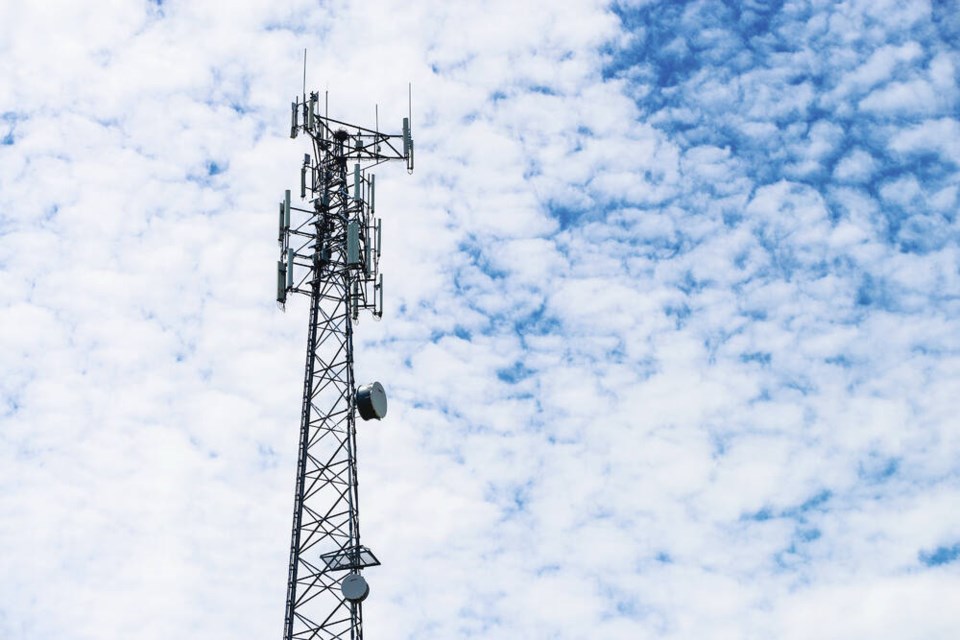Cellular service between Sooke and Port Renfrew is fully operational with the completion of seven new cell towers, the province announced Thursday.
The new towers eliminate a 70-kilometre dead zone along Highway 14 that includes remote communities and some of the Island’s most popular trails and beaches.
The province spent nearly $5 million on the project, which was led by Rogers Communications, which spent $695,000, Citizens’ Services Minister Lisa Beare said at the announcement in the village of Shirley.
“Government investments in cell connectivity deliver essential infrastructure, ensuring that residents, commuters and tourists can access critical services in case of an emergency and enjoy the benefits of reliable cell service,” Beare said.
In April 2021, the provincial government announced that the infrastructure for cellular service would be in place by October 2021 to provide the wireless service so desperately needed by residents, search-and-rescue operators and the thousands who use the trails and beaches along the Juan de Fuca Marine Trail.
But the construction of the towers — ranging from 40 to 60 metres high — and the associated hardware hit several snags. Rogers dealt with labour and supply-chain issues and site construction delays associated with access, powerline construction and environmental concerns on the seven sites.
The sites were rezoned by the Capital Regional District and involved several landowners, including First Nations and forestry companies.
Chief Jeff Jones said the Pacheedaht First Nation is pleased to have worked with the province and Rogers in a “productive and culturally sensitive manner in installing the cell towers on our traditional land.”
Constructing the network in the rugged terrain, along a road that is potentially hazardous during bad weather, was challenging, said Jones.
The chief said cellphone connectivity will enhance the quality of life, administration, operations, safety, security and economic community of Pacheedaht and Port Renfrew.
Gord Horth, general manager of the CREST system that provides emergency equipment and services to first responders in the capital region, said the new towers will provide a vital link to the increasingly busy corridor west of Sooke. The area includes Jordan River and Shirley as well as access points to beaches on the Juan de Fuca trail.
CREST is putting its infrastructure at five of Roger’s seven towers. Otter Point went live a few weeks ago. Shirley will probably go live next week, Horth said Thursday.
“Having cellular out there is fantastic for the public. And when CREST is all the way out to Port Renfrew, it will be fantastic for the first responders because we will be able to talk to one another, where they don’t have that ability right now. With Otter Point going live a few weeks ago, that’s made a huge difference to the Otter Point Fire Department, the RCMP and B.C. Ambulance,” said Horth.
Shirley is an important site and will give CREST coverage all the way to Jordan River.
“So that’s a really big win for us. The Shirley Fire Department, RCMP and B.C. Ambulance will have coverage on the CREST network. That’s huge.”
Horth estimates most of the work installing CREST hardware to Port Renfrew will be done by the end of May.
“From the public going out mountain biking or using the beaches for kayaking, being able to use their cellphones is fantastic. If they have a problem, they can get hold of their loved ones or emergency providers. And emergency crews will have to ability to co-ordinate activities. This continuous network will be a real boon to using that corridor whether you’re a first responder or a person going out there for a weekend holiday,” said Horth
Dwight Yochim, chief executive officer of the B.C. Search and Rescue Association, said the extended cell coverage allows people who are lost or injured to call for assistance, and means search and rescue groups can use built-in GPS technology to locate them, dramatically reducing search time and increasing chances of survival.
Funding for the cell project is part of the province’s Stronger B.C. Economic Recovery Plan, which included a one-time $90-million grant to the Connecting British Columbia program to expand high-speed internet and cellular access in rural and Indigenous communities.
>>> To comment on this article, write a letter to the editor: [email protected]



